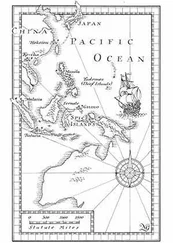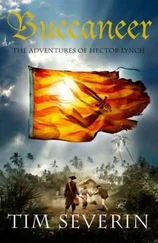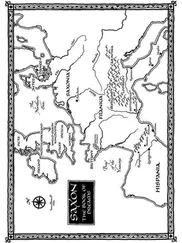Maniakes reacted with typical decisiveness. He ordered the tagmata to prepare to march, but not strike camp. Each unit was to leave behind a few men who would give the impression that the siege was still in place. They were to remain as visible as possible, keep the cooking fires burning, mount patrols and follow the normal routines. At the same time the engineers and heavy weapons units were to discourage further sorties from the city by keeping up a regular discharge of missiles, and the Frankish mercenaries from Normannia were to stay behind in case of emergencies. Our harbour flotilla was stripped of men. Skeleton crews, changing from one vessel to the next, would make it look as if the blockade was still operative. Harald gave command of this minimal force to Halldor, and then he and I, with about two hundred fellow Varangians, joined the flying column that Maniakes led inland, leaving quietly by night.
A week of forced marches across a dry and dusty landscape brought us to the west of a mountain whose subterranean fires reminded me of my days in Iceland, where the Gods in anger similarly cause hot rock to flow. Here the emir had established and fortified his base camp. He must have had warning of our approach, because when the tagmata arrived, the Saracens had already withdrawn within their defences and shut the gates.
Abdallah had chosen his position well. Behind the emir's camp, and on both sides, was broken terrain unsuitable for any direct assault against the fortifications. In front, open ground led down to a small stream shallow enough to be crossed on foot. On the opposite bank the land rose gently upward again to the low ridge where Maniakes set up his own headquarters, facing across to the Saracens. And here I watched how Maniakes's military genius turned Abdallah's apparent advantage against him.
Nikephorus explained to me what was going on. I had been perplexed to find the engineer included in the flying column because his heavy equipment was much too ponderous to be brought along. When I said as much, Nikephorus had grinned at me and said cheerfully, 'We'll find something on the spot to make up what is needed.' Now, as I waited near Maniakes's command post, I saw the engineer busy by a table and went over to see what he was doing. He had prepared a model of Abdallah's camp and its surrounding terrain set in a bed of soft clay.
'Hello, Thorgils,' he greeted me. 'As you can see, I don't always knock things down. I can also build them, but usually in miniature. This is where the strategos will fight his battle.'
'You and Trdat are just the same,' I said. 'In the Holy Land Trdat spent more time examining a model of the Golden Dome than looking at the real thing.'
'No, no, I mean it. Victory on the battlefield often depends on observation and timing, particularly when the enemy is so obliging as to shut himself up and let us take the initiative. See these little coloured markers? They represent the tagmata's forces. The grey markers are light infantry, orange for the archers and slingers, yellow for the heavy infantry, and red for the kataphractos, our armoured cavalry. Note that I've placed half of the red markers in that dip behind this ridge where they're out of sight of the Saracen lookouts. Later I'll add markers for the Saracen forces when I know more about them.'
'How's that possible? The Saracen forces are hidden behind their defences.'
Nikephorus winked at me. 'Not for long. That's just a wooden palisade, not a high city wall. Look behind you.'
I turned round to see an extraordinary structure rising from the ground. It was like the mast of a ship, but far, far taller than any I could have imagined. It was being hauled upright by a complex web of ropes and angled poles. 'It's a bit makeshift,' admitted Nikephorus, 'You can see the joints where my men have had to lash the sections together. But it will do. Think of it as a giant fishing rod, and that we're fishing for information.'
'What do you call it?' I asked.
'A spy pole,' he said, 'and that's only the lower section. We'll hoist an upper section later, and then steady it with guy ropes of twisted horsehair. There'll be a pulley at the top, and we'll use it to haul our observer into position. He'll not be the heaviest man in the army, of course. But he'll know his signal book, and after he's had a good look over into the Saracen camp, he'll signal down the information. Our scouts have already told us that Abdallah is expecting a frontal attack. His men have sewn the ground in front of their main gate with spikes, intending to lame our cavalry. They know that the kataphract is our main weapon.'
We spent the next four days waiting in front of the Saracen camp while Nikephorus and his assistants added to the coloured markers on the sand table according to the information from the lookouts. Each time they did so, Maniakes and his staff would come across to review their own tactics. They shifted the markers back and forth, discussed various possible manoeuvres, and heard additional reports from the scouts. Twice a day the officers of the tagmata were told the latest assessment of the enemy strength, and as I watched them cluster around the table I soon differentiated between them. Infantry men wore knee-length quilted cotton coats and greaves of iron to protect their shins, while the cavalry dressed in chain-mail body armour or the jacket they called a thorax, which was made of small iron plates stitched to a leather backing. Rank was denoted by a metal band of gold, silver or copper worn on each arm. The imperial troops were recruited from a dozen different countries and spoke at least as many languages, but all had been trained to the same army standard. They observed closely the little counters as they were moved about, and it was clear that every officer was learning precisely what was expected of him. I realised how chaotic and ill disciplined our Norse contingent must have seemed by comparison, and I understood why Harald and his men had been assigned a position where we would be directly under the eye of our general.
Abdallah brought us to batde on the fifth day. Perhaps he thought his advantage in numbers was overwhelming, or maybe he was still relying on the crippling effect of the iron spikes sewn on the battlefield. He did not know that our scouts had been picking up the iron spikes under cover of darkness, and that half of Maniakes's heavy cavalry had always remained hidden behind the ridge, where the army farriers had reshod all the cavalry horses with flat iron plates to protect their hooves. Nor had the emir any benefit of surprise. Hours before the Saracen army began to emerge from its defences, our observer on the spy pole had flagged a warning, and the imperial light cavalry were poised to disrupt the Saracens from forming ranks.
Standing next to Maniakes's command post, waiting to relay his orders to Harald and the Varangians, I watched as our scorpions, as Nikephorus called them, began to fling small rocks and iron bolts into the enemy ranks. These scorpions were the army's portable artillery — long-range crossbows mounted on tripods and light enough to be carried on the march. Between their salvoes the light cavalry unleashed wave upon wave of attack. One squadron after another they cantered deliberately forward to within range, then released a first and a second flight of arrows. Then each squadron wheeled about, and as it rode away the riders turned in their saddles and released a third volley.
'Our army learned that technique generations ago, on the eastern frontier, against the Persians. It triples their effective firepower,' Nikephorus commented.
Their assault looked to me more like a war game than a serious battle, yet men were falling in the Saracen ranks when each flight of arrows rained down, and I could see the disorder which resulted.
'If you watch carefully, Thorgils,' Nikephorus added, 'you'll note that one-third of the light cavalry is engaging the enemy, one-third is preparing the next attack, and one-third is regrouping, attending to their wounded, or resting.'
Читать дальше







